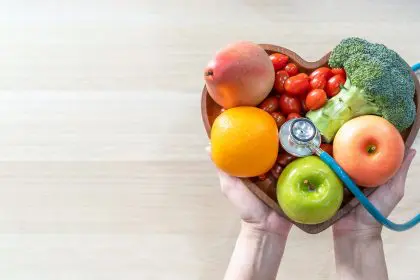The route to diabetes often begins not with obvious overindulgence but through seemingly innocent daily choices. From the morning granola bar to the afternoon cookie, these small decisions accumulate, potentially leading to serious health consequences.
The deception of healthy alternatives
Many people unknowingly increase their diabetes risk through foods marketed as healthy options. A typical breakfast smoothie can contain as much sugar as several pieces of candy. Dried fruits, often seen as a wholesome choice, pack concentrated sugars into small servings. A handful of dried mangoes contains sugar equivalent to several pieces of fresh fruit.
Granola bars and flavored yogurts present similar challenges. Despite their healthy image, these snacks often harbor significant amounts of added sugars. A single serving of flavored yogurt can contain more sugar than the recommended daily limit, while many breakfast bars rival desserts in their sugar content.
The artificial sweetener paradox
Sugar substitutes present their own complications in diabetes risk. While marketed as safer alternatives, sugar-free products may create false security, leading to overconsumption. These substitutes can affect the body’s insulin response over time, potentially contributing to the very condition people aim to avoid.
Sugar alcohols, common in sugar-free candies and baked goods, add another layer of complexity. While they don’t directly spike blood sugar, their presence in “healthier” treats often leads to increased consumption, as people believe they can indulge without consequences.
The portion problem
Modern packaging often obscures true serving sizes, particularly with sweets. What appears as a single-serving package might contain two or three servings, leading to unintended sugar consumption. This “portion creep” has gradually redefined normal serving sizes, making it increasingly difficult to maintain healthy limits.
The impact becomes more significant when considering daily habits. A handful of candy from the office jar, coupled with a sweetened coffee drink and an afternoon snack, creates a pattern of consistent sugar exposure that can strain the body’s insulin response.
Social sugar traps
The social nature of sugar consumption adds another challenge to diabetes prevention. Office celebrations, holiday gatherings, and family events often center around sweet treats. These occasions, while appearing occasional, often occur frequently enough to create a nearly constant stream of sugar exposure.
Summer barbecues feature ice cream and sugary drinks. Fall brings Halloween candy. Winter holidays arrive with cookies and candies. Spring celebrations include chocolate and pastries. This cycle creates regular opportunities for sugar consumption that can seem harmless in the moment but add up significantly over time.
The cumulative effect
The body’s response to regular sugar exposure can lead to insulin resistance, a precursor to diabetes. This process occurs gradually, often without obvious symptoms. Regular consumption of sweetened beverages, processed snacks, and desserts contributes to this progression, even when individual portions seem reasonable.
The pancreas works harder with each sugar spike, eventually struggling to maintain proper blood sugar levels. This strain, combined with frequent insulin demands, can accelerate the path toward diabetes, particularly when combined with other risk factors such as sedentary lifestyle or genetic predisposition.
Breaking the cycle
Prevention requires understanding both obvious and hidden sources of sugar. Reading labels becomes crucial, as does recognizing that “natural” sweeteners like honey or agave affect blood sugar similarly to regular sugar. Small changes in daily habits can significantly impact long-term health outcomes.
Practical strategies include:
Timing matters: Spacing out sugar consumption allows the body better processing time.
Portion awareness: Using smaller plates and measuring servings helps maintain control.
Strategic substitutions: Whole fruits provide sweetness with fiber and nutrients that help moderate blood sugar impact.
A balanced approach
Managing diabetes risk through sweet consumption doesn’t require complete elimination of treats. Instead, it demands awareness and strategic choices. Understanding how different foods affect blood sugar, recognizing hidden sugars, and planning occasional indulgences can help maintain both health and satisfaction.
The key lies in viewing sugar consumption as a long-term pattern rather than focusing on individual instances. This perspective allows for occasional treats while maintaining awareness of their cumulative impact on health.
This story was created using AI technology.
















